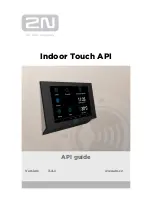
| 8
EN-Rev IM/GN-AM-EU/2.8 Copyright © July, 2021. CSI Solar Co., Ltd.
www.csisolar.com
etc.) incorporated in series within each string. Three or
more strings can be connected in parallel if an
appropriate and certified over-current protection
device is installed in series within each string. And it
shall be ensured in the PV system design that the
reverse current of any particular string is lower than the
module maximum fuse rating at any circumstances.
Only modules with similar electrical parameters should
be connected in the same string to avoid or minimize
mismatch effects in arrays.
To minimize risk in the event of an indirect lightning
strike, avoid forming loops with the wiring when
designing the system.
The recommended maximum series fuse rating is
stated in a table in the Annex A.
Modules should be safely fixed to bear all expected
loads, including wind and snow loads.
A minimum clearance of 6.5 mm (0.25 in) between
modules is required to allow for thermal expansion of
the frames.
The small drainage holes on the underside of the
module must not be blocked.
OPTIMUM ORIENTATION AND TILT
To maximize the annual yield, please calculate the
optimum orientation and tilt for PV modules in that
specific installation site. The highest yields are achieved
when sunlight shines perpendicularly onto the PV
modules.
AVOID SHADING
Even minor partial shading (e.g. from dirt deposits)
reduces yields. A module can be considered to be
unshaded if its entire surface is free from shading all
year round. Sunlight should be able to reach at least the
module even on the shortest day of the year.
Constant shading conditions can affect module service
lifetime, due to accelerated ageing of the encapsulation
material and thermal stress on the bypass diodes.
RELIABLE VENTILATION
Sufficient clearance (at least 102 mm (4.02 in)) between
the module frame and the mounting surface is required
to allow cooling air to circulate around the back of the
module. In case of a corrugated roof, the minimum
sufficient clearance is defined from the module frame
to the highest peak of the roof surface. This also allows
condensation or moisture to dissipate.
CS7N-MS and CS7L-MS (Not for CS7L-MS-R) modules,
when used in rooftop applications, should be installed
in a way that ensures enough ventilation. The clearance
between the lowest point of module and the roof
surface MUST be equal to or greater than 102 mm, tilt
angle of module-to-roof-surface should be equal to or
greater than 15°, and wind shields or decorative sheets
which will prevent ventilation around PV array are NOT
allowed to be installed.
According to UL 61730, any other specific clearance
required for maintaining a system fire rating should
prevail. Detailed clearance requirements pertaining to
system fire ratings must be provided by your racking
supplier.
5.1 MODULE WIRING
CORRECT WIRING SCHEME
Cable management scheme should be reviewed and
approved by the EPC contractor; in particular required
cable lengths should be cross-checked considering the
specificities of the tracker structure like bearing house
gaps. If longer cable or additional jumper cable is
requested, please contact Canadian Solar’s sales
representative in advance.
Ensure that the wiring is correct before starting up the
system. If the measured open circuit voltage (Voc) and
short-circuit current (Isc) differ from the specifications,
this indicates that there is a wiring fault.
When modules have been pre-installed but the system









































